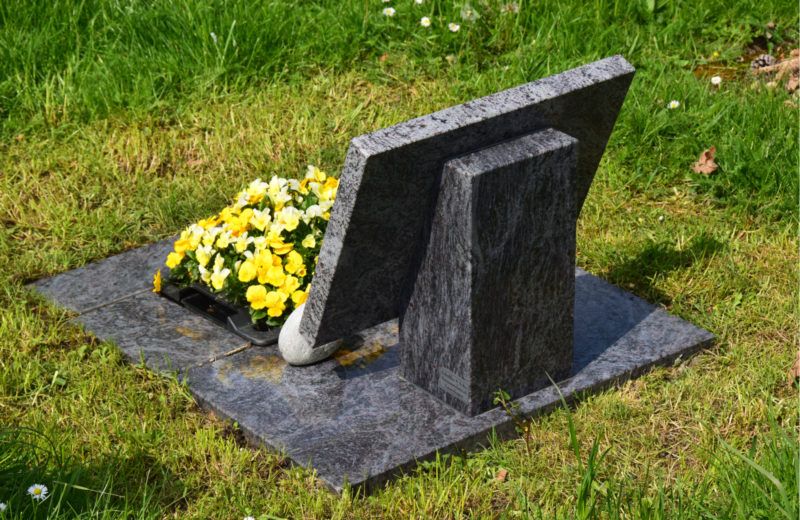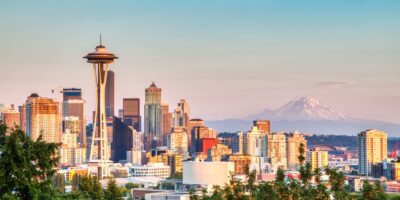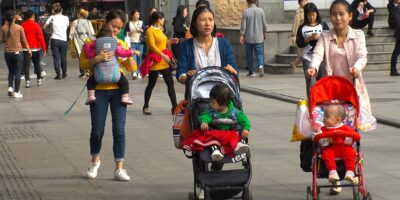Mortality Rates Were Already Rising in America. Why?

There is this almost farcical misconception that economics and numbers devalue the lived human experience, and economists are unattuned to human suffering. It doesn’t, and they aren’t. On the contrary, few people have an as acute a sense of what esoteric economic numbers mean for everyday life than economists.
With every uptick in unemployment, some people default on their mortgages, can’t feed their children, surrender to temptations of bottles and gun barrels or generally give up on social life. With every increase in growth, more people are rescued from their misery, improving their material condition.
Economists deal with numbers because numbers treat all lives equally, not just the most visible, the most recognizable, or the most relatable.
I first learned this insight from Angus Deaton’s The Great Escape; over and over by Tim Harford’s tireless investigations into what numbers really mean; and from Steven Pinker’s defense of his two numbers-heavy books, Enlightenment Now! and The Better Angels of Our Nature. In the latter, Pinker memorably wrote “Narratives without statistics are blind,” a dictum I fully took to heart.
It is therefore with mixed feelings that I made my way through Anne Case and Angus Deaton’s latest creation, Deaths of Despair And the Future of Capitalism, the book-length installment of their repeated work on U.S. mortality. Their story is grim, gloomy and tragic, as the pitch-black book cover suggests, but largely informed by the attention to numbers that economics demands and that made me much respect Professor Deaton.
Beginning in the mid-2010s, Case and Deaton started investigating why mortality rates – the number of deaths adjusted by population – have recently risen in America. Usually, this metric falls gradually as we get richer and healthier and better able to prevent life’s many fatal risks. They found a disturbing story.
Elaborately explained and well-presented, they paint a grim story of what has happened. Over the last three decades, White America has been possessed by ills that drove hundreds of thousands of them to take their own lives every year.
Out of view from American coastal elites, working-age men of otherwise good health (by American standards should a European health-freak duly remark) were dying like flies. And their deaths weren’t caused by a virulent infection, but from what seemed to be self-imposed harm – quickly, with a gun or a drug overdose, or slowly through the steady grind on the liver by excessive alcohol consumption. Together, Case and Deaton captured these in “deaths of despair.”
Beginning a few years ago, Case and Deaton received a lot of attention for reporting these deaths and connecting them to the grander ills of America’s hinterland in the midst of an opioid epidemic. Something began to change in the mortality rates of less-educated Whites in the 1990s – slowly at first, accelerating in the 2010s. Resembling one or two chapters of Deaton’s grand The Great Escape, the discussion about life expectancy numbers, what they mean, and how they suddenly fell in the mid-2010s are remarkably well explained:
For three years straight, between 2014 and 2017, America’s life expectancy at birth fell for the entire U.S. population. Since records began in 1933, this has never happened. State-level numbers suggest that the only precedent took place a hundred years ago when World War I and the Spanish flu also reduced the otherwise gradually improving life expectancy that accompanies flourishing societies.
Which eerily brings us to the present corona pandemic.
Just a few months ago, deaths of despair seemed like a horrific and devastating backside to the otherwise roaring ’10s – a social backlash to a flourishing and tech-driven globalization that was about to pass: Drug overdoses fell in 2018, life expectancy rose again somewhat, the great American job machine kept churning out jobs and a tight labor market and humming economy finally pushed up the lowest earners’ wages. The worst of the opioid epidemic and its contribution to deaths of despair seemed to slowly have passed.
Until now. Precisely when we thought that Case and Deaton’s work was passé, it has become more relevant than ever. (Only epidemiologist Adam Kucharski‘s The Rules of Contagion: Why Things Spread and Why They Stop published in February can claim a more timely publication).
This, too, the coronavirus has now upended. For what happens when millions and millions of people suddenly have their employment terminated? The status and dignity earned from providing value to others ended and was replaced with – at best – a rent moratorium and a minor check from the government? Most importantly, what does physical isolation on a massive scale do to people who are already struggling with their place in society and identity in this brave new world that they hardly recognize?
A common story is that desperation from economic deprivation causes communities, families, and social cohesion to collapse. The deaths of despair are concentrated in left-behind former manufacturing areas of Ohio, Pennsylvania, or Virginia plus economically deprived places like West Virginia and much of the South. Deaths of despair were the iconic backstory of globalization that won Trump the Presidency, said common sense and the affluent coastal elites who left their fly-over fellow citizens behind. Quick highs and fast endings became an escape; this was the human price we paid for globalized markets, the destructive side of Schumpeter’s famed “gales of creative destruction.”
To their large credit, Case and Deaton debunks many such fantasies, calling them “False Trails.”
Deaths of despair are not driven by poverty, as poorer Blacks and Hispanics are doing comparatively well. They are not the outcome of the 2008 financial crisis, as the rise of mortality predates it and “continued unabated through the slump.” Neither do they stem from obesity or otherwise deteriorating health, as other countries like England and Australia have seen similar rises in obesity, and because indicators of mental health and self-reported pain are similar across all levels of population BMI.
Finally, they are not caused by inequality – always the go-to villain for social ills – as the relationship between mortality and income inequality across American states has all but disappeared over time; for illustration, New York and urban California are among the most unequal places in the country, but are largely spared from deaths of despair.
“Those in despair,” writes Case and Deaton, “are in despair because of what is happening to their own lives and to the communities in which they live, not because the top 1 percent got richer.”
What, then?
Well, this is where Case and Deaton’s impressive work gets less so.
In 2017 alone, counts Case and Deaton, 158,000 Americans died from deaths of despair, most of them white; almost all of them with, at best, a high school diploma. On most of the metrics presented (self-reported pain and life satisfaction reports, mental distress, all-cause and deaths of despair mortality), the turn for the worse is strictly a White phenomenon.
Despite incarceration, police and gang violence and the overhang of discrimination, the stark increase in cohort-by-cohort deaths of despair experienced by those without a bachelor’s degree is entirely missing for Blacks and Hispanics. All-cause mortality for midlife Blacks is on the same steady decline it has been for decades, whereas that for Whites reversed around 1999. (There is a noticeable spike in deaths of despair for midlife blacks without a college degree beginning in the mid-2010s after having been flat for decades).
What’s puzzling about this development is that Blacks routinely show lower incomes, a higher degree of poverty (a predictor of suicides), and even higher all-cause mortality than whites, but are not ending their lives in despair as non-college educated Whites seem to do. It’s the trajectory of one’s income and social status that seem to matter. What’s uniquely hurting whites without bachelor’s degrees is their dire outlook: no way out, no route towards improvement.
Even more detrimental to the recession-causes-suicides argument is the observation that mortality overall seems to move up and down with the business cycle instead of getting worse during downturns. Some reasons may include that heart attacks and road accidents fall during recessions even though suicides might rise.
The only indicators that strongly protect against the epidemic facing white America is – to not be White, and to have an undergraduate degree: “Education”, writes Case and Deaton, “particularly the divide between those with and without a bachelor’s degree, has increasingly split the population into those who are doing well and those who are doing badly.”
Widely agreed upon among economists is that, despite how readily we’d like to believe it, there doesn’t seem to be anything magic about college itself. Rather, it’s an expensive signaling device reflecting underlying work habits or cognitive abilities. In a very Caplan-esque sense, pointing to college as a visible signal for something hidden rather than a magic wand that makes all well, Case and Deaton report that those who finished college are on average one-and-a-half inch taller than those who didn’t, “a reflection of better childhood health and nutrition.” Other, non-educational, advantages set people up for success, which finishing college at best merely enhances; at worst it’s simply a convenient statistic that captures more fundamental differences that are difficult to observe.
Was it worth it?
One interesting question raised by the authors’ inquiry is to what extent the disruption of working-class white Americans’ “way of life”, as Case and Deaton puts it, was much of a choice – politically, economically or even individually. Was there an alternative path that U.S. policy-makers, knowing that they would end up here, could have opted for?
One that had preserved some of the jobs and the maintained status for at-risk Americans, perhaps through more aggressive protectionism and punitive taxes on automation? As the authors blame American health care rather than the China effect, globalization and automation, there might have been a few things we could have done.
The globalization story presents us with an interesting utilitarian calculus that we recognize from immigration debates and the financial crisis, where cheap goods and flourishing living standards for hundreds of millions of Americans were coupled with misery and grim fate faced by those living in despair and humiliation.
Even if it were possible to practically or politically have treated the collapse of the American working class differently, the efforts required surely would have stifled the already low growth that Case and Deaton in part blame for the rent-seeking behavior they associate with an America that failed its citizens.
In these corona times, we are experiencing a reverse-case déjà vu: trade-offs between the value of life and the value of economic prosperity and liberty have been labelled morbid and unacceptable, unceremoniously pushed aside – ignored, Governor Cuomo, at your and everyone else’s peril. In the aftermath of the COVID-19 pandemic of 2020, there will be a lot of discussion of whether the stringent measures many governments imposed were worth it. Did they prevent the spread of the disease? Were the economically disastrous actions worth it? Were the lives we saved by hibernating our economies and societies worth their cost in terms of jobs lost, incomes gone, social life disrupted?
Sweden has become the punching bag for ”the no-tradeoffs crowd” who’d rather sacrifice an endless bag of economic prosperity for lives currently lost and at-risk of being lost. In hindsight we’ll be better able to tease out the exact bill, delivered to us financially and in human lives.
Case and Deaton’s gloomy tale presents us with a different flavor of that same question. How much quality of social and financial life is it reasonable for you and me to give up in order to prevent harm to others? To what extent am I responsible for my brother’s, neighbor’s, or colleague’s well-being, including physical pain and mental distress that may drive him to end his own life?
These are much bigger questions than most of us are equipped to handle, least of all the politicians we have elected to make such calls. Teasing out direct causality in a fast-changing world of billions of people is tricky, whether it be damage of pandemic fighting or deaths of despair; dishing out blame is even harder. What’s undeniable is that the globalization that shoved blacks into crack cocaine of the 1980s, and the automation and hollowing out of communities that hooked whites on fentanyl in the 2000s, are eerie warnings of what the economic victims of the coronavirus might look like.
Key word is hopefully “might.”
When the deaths of despair finally seemed to have turned a corner, an unholy alliance of microbes and privileged government officials decided to shut down the very economy and tight labor market that were responsible for some brightening at the end of the despairing tunnel.
Instead, the well-off and well-protected political overlords closed society, including the low-paying jobs and places of worship and community centers that offered the despairing demographic some slivers of hope. Instead, they sent them an impersonal check, as if their main trouble were material deprivation. Case and Deaton make clear that this is not the case. The media, the politicians and the rich can work from home; never mind the rest.
If officials were set on harming the very constituents that most coastal elites look upon with disdain, they couldn’t have done better than March-April of 2020. From the comfort of my cozy position in a non-locked down country, I fear not for the supply chains, the food delivery, or even the healthcare workers who bravely face infections on a daily basis. While their work is stressful, scary, and admirable, they are the best people suited to deal with those risks, both medically and financially.
Instead, I fear for the brittle and slowly decaying communities that were already struggling as this began, the slowly disintegrating societies that it took Case and Deaton’s half-decades-long work and an opioid epidemic for us to observe.
Case and Deaton’s well-written and gloomy book was meant as a warning. Relentlessly fighting an infectious disease, the U.S. government seems to have treated it as a handbook.










